“The Owl House” guides viewers through beautiful themes and representation in “Thanks to Them”
The promotional poster for The Owl House’s season 3, which features its main characters in adventurous poses.
This review will contain tons of spoilers for “The Owl House” season 3, some spoilers for “She-Ra: Princesses of Power” and even a few spoilers for “Avatar: Legend of Korra.”
The first time I ever saw two female main characters kiss on screen in children’s media, I cried, hard. Adora and Catra, from the “She-Ra and the Princesses of Power” reboot. I didn’t expect it to happen. Sure, the show had displayed queer representation since its first season, and the series’ creator was a lesbian, but that didn’t mean a single thing if the executives overseeing the show wouldn’t greenlight the pairing. Adora and Catra had heavy romantic tension, yes, but I thought it would be another Korrasami via “Avatar: Legend of Korra” ending—the two same-sex main characters looked into each other’s eyes as the sky behind them displayed bisexual colors, and then the show ended. I didn’t expect such an obvious show of queerness—the two main characters kissing as they sob from the sheer volume of the love they feel for each other—in a children’s cartoon like She-Ra. That was only in 2020. Yet now, displays of queerness like this feel almost commonplace in the cartoon medium, and no show represents that better than “The Owl House.”
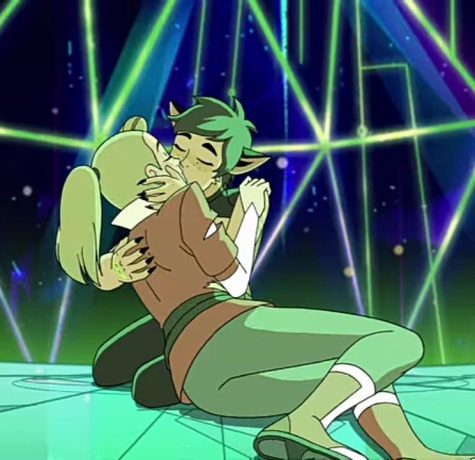
“The Owl House” is a Disney cartoon created by Dana Terrace that was released in January 2020, just before quarantine began. The show follows Luz Noceda, a Hispanic human girl, as she navigates the demon realm she discovered and accidentally trapped herself within in an attempt to escape a life that constantly tried to constrict her. She is looked after by a recalcitrant and witty witch, Eda Clawthorne, and her demon-dog-thing, King. The two teach her how to become a witch in the way that Luz has always dreamed of despite her human body.
Luz is queer in every sense of the word. Not only does she struggle immensely to fit in due to her bizarre yet creative interests and behavior, but she is also bisexual. Confirmed, stated outright within the most recent episode of the show. Her queerness was also on full display before then, as she finds a witch girlfriend in her ex-rival, Amity Blight. The two regularly kiss throughout the show, display affection towards each other and gift each other pet names—the show does not let the romantic aspect of their relationship go unnoticed, and it’s adorable.
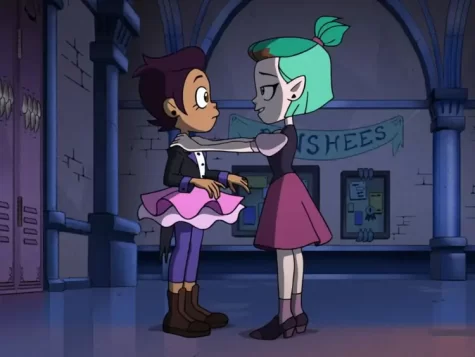
This all might seem surprising to those familiar with Disney’s track record of queer representation—usually blink-or-you’ll-miss-it moments that can be cut out in versions sent to other countries. The company has a history of censoring anything vaguely controversial in general, including attempts at queer representation. Alex Hirsch, the creator of Disney’s “Gravity Falls,” an employee of “The Owl House” and Terrace’s long-term ex-boyfriend, shows this well through the complaints. This behavior is why it might not be very surprising that Disney canceled “The Owl House” and shortened its third season to three 44-minute episodes, despite its stellar ratings and active fanbase. However, Terrace insists that she will choose not to believe that the show was canceled due to its queerer aspects, but more likely due to Disney’s need for stability from established properties at the beginning of the pandemic. Though she also stated that Disney was not very transparent with her about why the cancellation occurred.
Despite outrage among fans of the show, Disney continued with the three-special third season of “The Owl House.” The first special, “Thanks to Them,” was recently released for free by Disney on the YouTube platform, drawing in astronomical numbers for the channel. In spite of the new format, the episode received an overwhelmingly positive reception, with fans of the show praising both its queer themes and its engaging plot.
“Thanks to Them” dropped viewers back into the world of “The Owl House,” successfully recreating and adding to the universe. I’m going to assume that if you’re reading a review on something that happens so late in the show, you are already somewhat familiar with it, but I will provide a quick refresher. Previously, Luz and her friends found themselves in immense trouble. Emperor Belos of the Boiling Aisles, an undercover witch hunter and the big bad of the show, had been attempting to drain all magic power from his citizens, who were witches. However, Luz and her friends—Willow, a witch who specializes in plants; Gus, who specializes in illusions and Hunter, a magicless witch who had previously worked for the emperor before defecting—together with King, freed an even bigger bad, The Collector, to stop Belos. After being freed by the protagonists, The Collector went on to destroy Belos and reshape the entire demon realm. This prompts King to force Luz, Hunter, Gus and Willow to escape to the human realm without him through a portal Belos had opened before being destroyed.
Season 2 ended with the four in front of Luz’s house, exhaustion clear on their faces, meeting up with Luz’s mom, Camila, who she hadn’t seen in person since she accidentally trapped herself in the demon realm. Meanwhile, the rest of her friends, caretakers and friends’ families remained trapped in the Boiling Aisles, suddenly under new management.
Season 3 began right where season 2 ended, with Luz and her posse of teen witches expelled into the human realm with no way back. The gang’s new goal is to find a way back to the Boiling Aisles in order to help its citizens. What follows is a series of shenanigans as the witches explore the human realm, where Luz tries to reshape herself to fit into a world that she never truly felt right in. The special perfectly builds upon practically every theme the show pushed throughout its run, from what makes up one’s identity, to what makes a family, to grief, to queerness.
It continues on with its queer themes throughout the episode. Luz and Amity share a moment in the rain, dancing as their friends laugh around them. The two wear matching costumes to a Halloween bash, dressed as characters from their favorite books. Lesbian and bisexual flags both pop up throughout its run, even melding with the color scheme of the show. The episode even introduces a nonbinary character in the form of Masha, the second of the show’s cast. All the queer characters play a role that is fundamental to the story; deleting the indisputably queer moments from the special’s run would undeniably cause it to cease making sense. Disney would not be able to censor the show’s queerness to make it digestible to other countries in the way they often do, allowing Terrace to make strides when it comes to queer representation in children’s media.
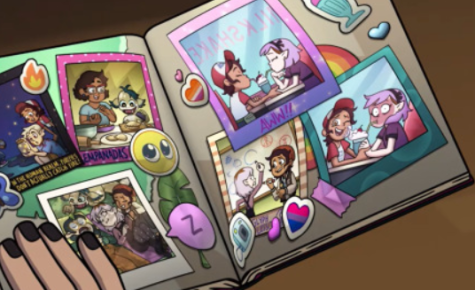
However, the special’s queer themes are far from the only thing that makes it notable. Rather, the episode touches upon a variety of themes with sophistication and grace.
One throughline of the show which nestles its place as the heart of the special is what constitutes a family. “The Owl House” has always shown a variety of family types throughout its run—Willow has two dads, while Gus has only one and no mother. Luz has only her mother, and the two communally grieve over the family’s lost father, remnants of whom can still be seen throughout the house. Amity may have both parents, but her mother is toxic and abusive, which causes her to no longer view her as a part of the family. As a magical clone of Belos’ brother, Hunter has no biological family, though he grew up believing Belos to be his uncle, one that abused him both mentally and physically. However, regardless of the characters’ blood, the group all successfully seek out and find family in each other.
Within the episode, they grant each other advice, comfort and physical affection, much like a family would. They scold each other for their stupidity and offer help to those who are hurting. Even characters who are an entire space-time continuum away from their family never feel truly alone.
It is through playing around with bonds like this that the special presents its other themes, such as identity. When Hunter, constantly anxious over his newfound identity as a clone, begins to question who he is, Gus helps him despite not knowing what Hunter is truly stressed about. The two share an almost brotherly bond, rooming with each other, discovering new interests with each other and comforting one another. Gus’s advice, that Hunter can choose who he wishes to be regardless of what’s been preplanned for him, helps the teen more than the other boy could ever understand. This becomes extremely evident due to events and threats that appear throughout the special.
Luz also struggles with her identity. She’s been shown to struggle with human socialization throughout the show, and this remains true in the special despite her newfound experience from the demon realm. This is why it hurts her so much to know that she will likely have to stay in the human realm after saving the demon realm for her mother’s sanity—even if she fails to confirm that fear with anyone else and might find herself sorely mistaken.
Familial bonds, both blood and found, also put another one of the special’s themes on display: grief. Grief for a loved one, grief for a life one cannot lead. As mentioned before, references to Luz’s dad remain dotted throughout the episode. Camila’s dreams leave her hyperventilating over the fear of failing her child, of making her suffer the way she did growing up. In old dusty cosplays made for two left in forgotten basement closets. In picture frames in the house, video diaries and so much more. His presence is felt: it’s heavy, and it guides Luz and Camila’s relationship as both are filled with the fear of losing each other. By proxy, this fear extends to the rest of her found family. Luz constantly believes herself to be the leader, responsible for keeping her family safe, but throughout both the special and the show, she grows to learn the family is there for each other, and that relationships aren’t purely one-way.
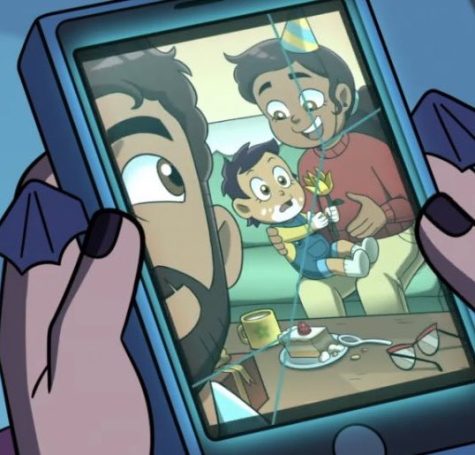
The special cycles through all these themes in just under 47 minutes, something that “The Owl House” has never had to do before. To account for their loss of time, a lot of exposition and fluff is shown through creative and heartfelt montages. The special is able to jump through the timeline using these supercuts in a way that feels necessary rather than lazy. Even if we may never get any actual episodes of the witch gang shopping for clothes or going to the beach, we at least get to know that they happened. These montages may cause the episode to feel rushed at times, but the actual progression of the episode is logical, understandable and feels well done. The non-montage scenes take their time when needed and speed up the special when possible. Overall, despite the new time constraints, “Thanks to Them” is able to successfully deliver a graceful and well-thought-out story. The clip is a bit quicker than fans of the show might be used to, but it’s easy to adjust to.
Through its suspenseful plot, complex themes and a deep, underlying sense of warmth, “Thanks to Them” is an important installment of “The Owl House.” Despite feeling somewhat rushed at times due to the new format, the special successfully covers all its bases and does so in an interesting and climactic way. With an overall score of eight out of ten, “Thanks to Them” should leave viewers hungry for future specials, which will release at the start of 2023.
Your donation will support the student journalists of Carnegie Vanguard High School. Your contribution will allow us to cover our annual website hosting costs and fund field trips, competition fees, and equipment. We appreciate your support!
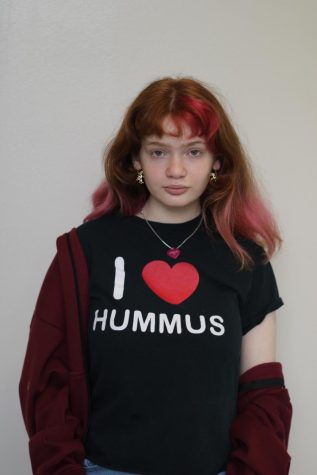
Danielle is a senior, as well as an activist for queer and feminist rights, which often makes its way into her writing. She is a family and friendship-oriented...

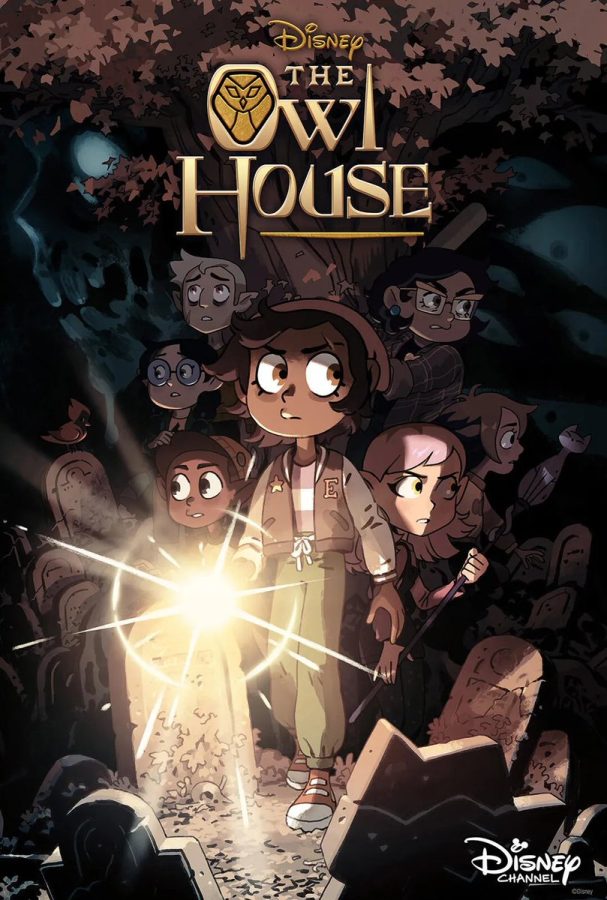
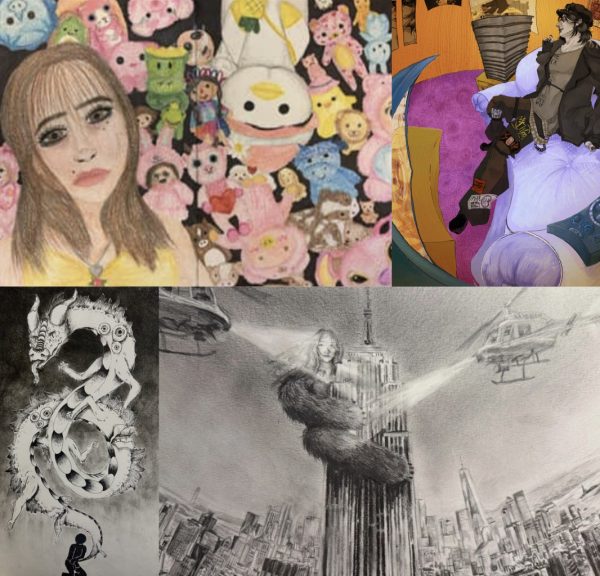


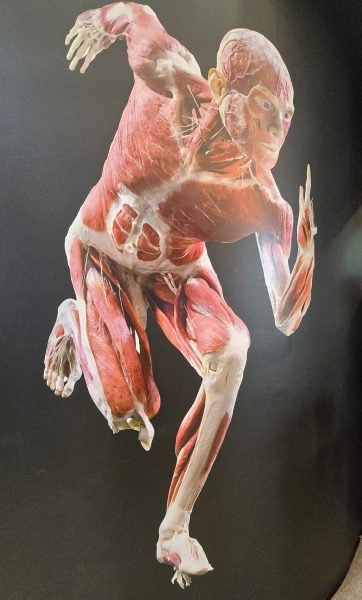

Rinn Wilson • Nov 14, 2022 at 9:54 am
I absolutely love the commentary that you gave on Disney and how you characterized this— I also love the commentary on the episode itself and how you captured the uphill battle Dana Terrace had to face to get this show released!
Katheryn Consuegra Pena • Nov 14, 2022 at 9:40 am
I LOVE THIS ARTICLE SM